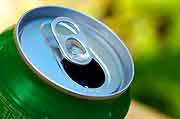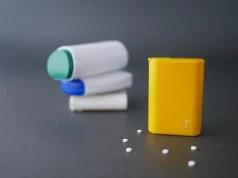Reduction in sugar-sweetened beverage intake over 12 months linked to increase in plasma HDL
THURSDAY, Sept. 3, 2015 (HealthDay News) — Consumption of sugar-sweetened beverages (SSBs) by children is positively associated with triglyceride concentration, according to a study published online Sept. 2 in the Journal of Nutrition.
Maria I. Van Rompay, Ph.D., from Tufts University in Boston, and colleagues examined SSB intake in a multi-ethnic sample of children aged 8 to 15 years. Cross-sectional associations between baseline SSB intake and blood lipid concentrations were assessed in 613 children; longitudinal associations between mean SSB intake and lipid changes over 12 months were examined in 380 children.
The researchers found that there were correlations for greater SSB intake with lower socioeconomic status, higher total energy, lower fruit/vegetable intake, and more sedentary time. Greater SSB intake correlated with higher plasma triglyceride concentrations (62.4, 65.3, and 71.6 mg/dL for children who consumed >0 to <2, ≥2 to <7, and ≥7 servings per week, respectively; P-trend = 0.03). No cross-sectional associated was seen for plasma high-density lipoprotein (HDL) cholesterol. Mean SSB intake over 12 months was not associated with lipid changes in the longitudinal analysis; among children who decreased their intake by ≥1 serving per week, the 12-month increase in plasma HDL-cholesterol concentration was greater than that seen in those whose intake stayed the same or increased (P = 0.02).
“Further research in large diverse samples of children is needed to study the public health implications of reducing SSB intake among children of different racial/ethnic groups,” the authors write.
Copyright © 2015 HealthDay. All rights reserved.








